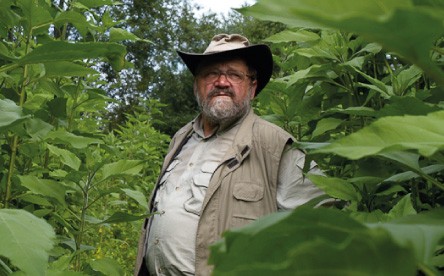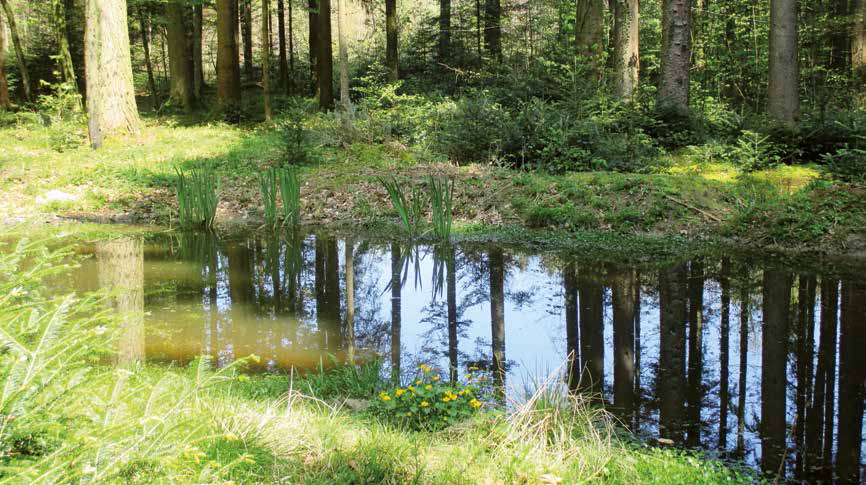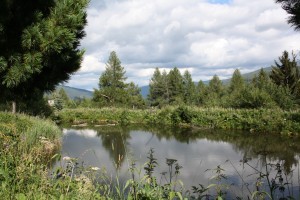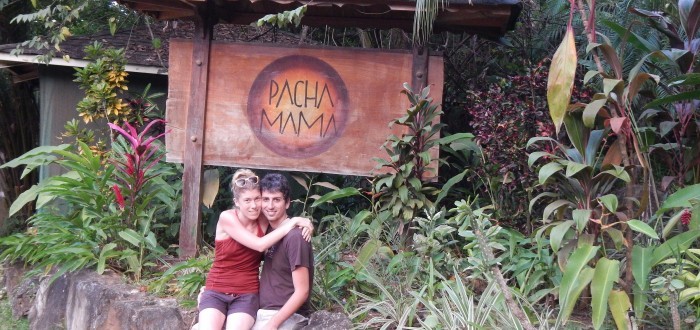THE IMPORTANCE OF WATER in Permaculture and not only…
The example of Sepp Holzer, the man who has built a system of 60 small lakes in his farm on the Alps.
Water is vital, water is life, in fact it’s the key for the humankind survival on this planet. Especially today that water resources are becoming scarce, it’s important to know how to use them wisely and learn how to save such resources.
For this reason, water is one of permaculture’s main subject according to the vision of Sepp Holzer, the rebel farmer from Austria who turned his farm, in the heart of the Alps, into an example of agriculture in harmony with nature.
Sepp Holzer’s small lakes in the Alps
The context of Holzer’s farm is far from being an easy one. Indeed, it’s located in the Alps at 1500 metres above sea level and it’s characterised by a harsh climate. No one would expect to find there such an abundance of water and cultivations.
And yet it’s not like that…Holzer knows exactly how to manage water when he needs it: for example, some water springs are used to provide fresh water to small lakes and water-gardens. The lakes are located throughout the farm and linked one another by a cascade system.
Overall, Der Krameterhof (Holzer’s farm) is crossed by a network of around 60 ponds and small lakes, water-gardens and wetlands. This system is useful for fish, shrimp and shellfish farming, as well as for the cultivation of several water plants. Geese and ducks can also be bred in a natural way in ponds and lakes.
Moreover, wetlands, biotopes and ponds have the advantage to offer a habitat to many useful creatures, such as snakes and amphibians which are considered precious allies by Sepp Holzer because they feed on pests and other small harmful animals.
Wet areas are important also for another reason: they increase humidity in cultivated lands and through evaporation they create flourishing microclimates.
Another advantage of water is the possibility to generate sustainable energy. For this purpose, Holzer has built two small power stations with turbines fed by water from the lakes that provide energy to most of the farm, which has an extension of around 70 ha.
Suggestions for creating a water-garden
When you project a water-garden or a pond, first you should have very clear what you intend to use it for, because every possibility has different factors to be considered. A small lake for fish farming is different from a water-garden for the cultivation of water plants, even though sometimes it’s possible to manage a water resource for multiple purposes.
The first thing to do is carefully examining the area on which we want to create a pond. The factors to be considered are soil condition, topography (the position within the territory) and available water resources, if there are any. Topography is very important for the pond stability and in order to avoid landslides and bank failures it’s necessary to do the work in accordance with best practice.
We need to have a precise idea of soil conditions and verify the exact position of wet land and landslides. In order to create a lake or pond, the presence of water in the place is a very convenient factor.
It’s also important to establish the size of the pond or water-garden because it affects the kind of digging that will be needed. If what we want to create is a small biotope, the soil can be dug even by hand, otherwise we will need an excavator of variable sizes.
Once the digging is completed, the bottom of the pond has to be made waterproof without using plastic, which is all but a natural material. If we plant a tube vertically into the bottom, this will allow water level regulation through a simple rotation of the tube. It will be easy then to let water drain away in order to catch fishes or harvest water plants.
Once the pond is completed, we have to create the banks by using stones and rhizomes. We can let our creativity run free in this phase and decide to decorate the pond in the way we most like. Holzer for instance uses gnarled trunks, fords and wooden walkways, everything made at very little cost.
What is a biotope?
A biotope is an area of uniform environmental conditions providing a living place for a specific assemblage of plants and animals that together form a biocoenosis. Biotope and biocoenosis together form a functional unit called ecosystem.
Who is Sepp Holzer?

Sepp Holzer, the rebel farmer of the Alps, has made his farm (Der Krameterhof) one of the greatest example in Europe of permaculture applied to temperate climates.
By applying the principles of permaculture, he managed to turn steep mountain slopes at 1500 metres above sea level into a flourish and hyper-productive farm which every year is visited by people from all over the world in order to learn the principles and the techniques used there.
Newsletter
ARGOMENTI
- Activities (8)
- Attività (10)
- Attrattive (16)
- Cosa fare (22)
- Farm products (4)
- Fattoria dell'autosufficienza (62)
- Fattoria dell'autosufficienza (40)
- Fauna (8)
- Flora (5)
- I nostri modelli (15)
- Istruzioni per viaggiare (2)
- News (63)
- News (97)
- Our models (14)
- Permacultura (30)
- Permaculture (23)
- Prodotti della fattoria (4)
- Senza categoria (2)
- Senza categoria (4)
- Things to do (22)
- Tourist attractions (15)





